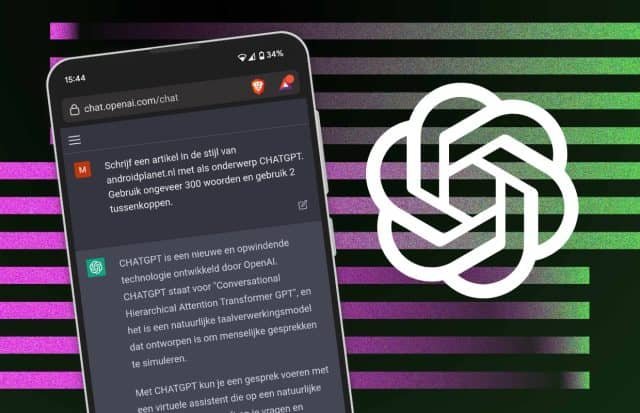ChatGPT is an insanely powerful tool that’s reshaping how we work, how we live, and how we do business.
Here’s 8 Ways to Use ChatGPT
1. Write LinkedIn content to help get better job opportunities
LinkedIn is an absolute goldmine for building relationships and landing better job opportunities. ChatGPT can help you create killer content that showcases your expertise and thought leadership in your industry. You can enter prompts related to your field, and let ChatGPT generate insightful posts that’ll make your profile shine.
For example, if you’re a lawyer, you can try variations of prompts like, “Analyze the impact of recent legal developments on small businesses.” Meanwhile, if you’re a salesperson, try something like, “What are some effective sales strategies for closing deals in a remote work environment?” Or, “Write a few paragraphs about the role of empathy in building long-term client relationships.”
The key here is to use ChatGPT to uncover industry insights and demonstrate your knowledge, making you more attractive to potential employers and new job opportunities. You come up with the ideas that’ll resonate with people in your field on LinkedIn, and ChatGPT helps you write the content.
2. Write cold emails for outreach
Especially when you’re early in your business journey, the best way to get revenue is by reaching out and respectfully grabbing it. Reaching out to people via email and DM is a big part of that, however, the tact in how you do it will completely be the variable of how successful you are.
For example, if you’re an influencer looking for brand deals, try prompts like, “Write an email to introduce myself as a fashion influencer to a clothing brand for a potential collaboration” or, “Write a pitch email for a partnership with a cosmetics company to promote their new product line.”
On the other hand, if you’re a sales rep for a company, use prompts like, “Introduce our software solution to a potential client experiencing productivity challenges” or, “Showcase the benefits of our consulting services to a small business owner looking to scale in 2 paragraphs.”
By leveraging ChatGPT to write personalized and effective cold emails, you’ll save time and increase your chances of successful outreach, landing brand deals, or closing new clients.
3. Write articles about nuanced topics in your field
ChatGPT can help you create in-depth, well-researched articles on nuanced topics, establishing you as an expert in your field.
Give ChatGPT some prompts related to your industry, and it’ll generate a detailed, informative article that you can edit and publish. For example, if you’re a mortgage professional, you can use a prompt like, “Write an article that compares interest rates between 2008, 1974, and 1929.” ChatGPT will then create a comprehensive piece that highlights the differences and their implications on the mortgage market.
Similarly, if you’re a digital marketer, try a prompt like, “Analyze the impact of AI technology on digital marketing strategies” or, for an HR professional, “Discuss the benefits and challenges of remote work for employee engagement and company culture.”
You can use your expertise, knowledge, and combine that with what’s culturally relevant to the people you’re trying to reach. AI can help you save time so all you have to do is edit the article and add your nuances, instead of having to execute the entire thing from scratch. Again, the ideas are what matter in this new world of AI, execution is commoditized.
By using ChatGPT to write insightful articles on niche topics, you’ll save time on research and drafting, while solidifying your authority and expertise in your industry.
4. Analyze your social media messaging
Here’s a fun one – you can use ChatGPT to analyze common words, phrases, and messaging in your content to find patterns in what works.
For example, let’s say you’re trying to find similarities in the words you’ve used in your best tweets – you can feed ChatGPT a prompt like, “Write code that I can copy and paste into Google sheets which will analyze the most frequent words in a column.” You can even ask it to exclude common words like “the, a, an,” etc., so you get the most useful results.
If you have your best tweets loaded into a spreadsheet, this could quickly help you identify the most common words and phrases that lead to engagement & reach.
With that info, you can analyze for yourself why those words are working. That’s where the human side comes in.
5. Use it to facilitate education and learning
For those sitting on school boards or sitting on various boards of education, it’s time to embrace innovation and use it to your school’s advantage. Instead of fearing technology like ChatGPT, let’s leverage it to enrich our students’ learning experiences. The creativity and critical thinking involved in asking ChatGPT questions can be powerful tools in the learning process, like you’ve seen above in some of the examples so far in this article.
It’s not 1987 anymore. With technology at our fingertips, students don’t need to memorize as much as they used to. We can now focus on teaching them real-life skills, critical thinking, and even emotional intelligence.
Here are some tactical examples of how boards can help & empower teachers to use ChatGPT in their classrooms:
Generate engaging lesson plans that incorporate current events and trends.
Create thought-provoking discussion questions to spark debates and conversations among students.
Develop real-life scenarios and case studies for students to solve using their newfound knowledge.
Use ChatGPT to create quizzes or assignments, allowing students to apply their learnings in new ways.
Embracing technology like ChatGPT opens up opportunities for more dynamic, engaging, and relevant education. Instead of fearing it, let’s figure out how to teach with it and prepare our students for the world they’re inheriting. After all, every 11-18 year old is already all over this! It’s a wrap.
6. Content Language translation
This one’s for content creators who want to expand their content into different audiences in different countries.
ChatGPT can easily translate written content into different languages, which you can use for blog posts or even captions on your social media videos. It’s as simple as feeding it a batch of text and asking it to translate into any popular language of your choice.
7. Write SEO-friendly social media copy
Another helpful strategy for the content creators out there.. Try using ChatGPT to generate effective, platform-specific video titles and captions for your social media content.
For example, you can use a prompt like, “Provide 3 YouTube Shorts titles following best SEO practices using the following excerpt…” and then include a brief theme from your video. You could even use ChatGPT to get specific hashtag recommendations related to your content.
8. Speed up data analysis
ChatGPT can help you speed up data analysis, making it easier to draw insights and make informed decisions. For example if you work in marketing you could enter something like: “Analyze the performance of our latest email campaign and provide recommendations for improvement,” and feed it key details like your click through rate, subject line, and text.

